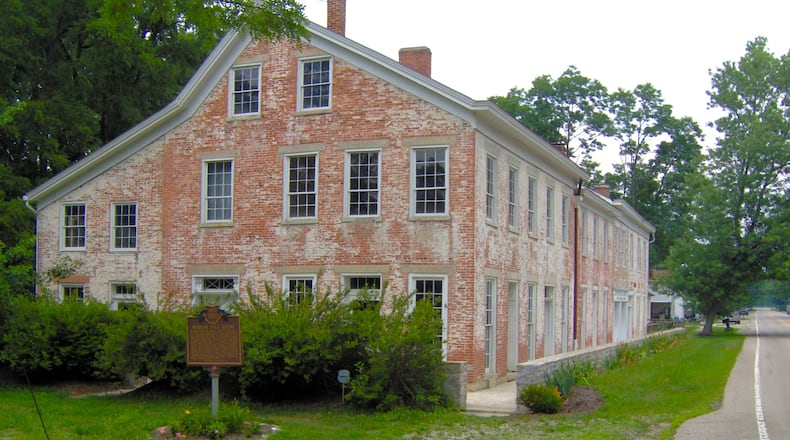Today, we feature the marker at the Bunker Hill House, located at 7919 OH 177 in Preble County.
Marker text
Side A:
The Bunker Hill House, previously the Bunker Hill Tavern, was built in stages between 1834 and 1862.
The building is one of Ohio’s best representations of Federal-Greek Revival style “pike town” architecture. This architectural style is closely associated with pre-Civil War horse-powered turnpike transportation and lodging.
The building was a way station for pioneers heading west and for drovers driving their animals to Cincinnati stockyards. It was also a stagecoach stop on Eastern Stage Coach Company’s Cincinnati Omnibus Line that operated daily between Cincinnati and Richmond, Indiana.
Tavern operations ceased in 1858 due to decreased turnpike travel resulting from the newly completed railroad through nearby Camden. In 1862, a general store was established to supply the growing population in the area. The store closed in the early 1900s with the advent of the automobile, which made travel to larger, more distant stores viable.
The Bunker Hill House was listed on the National Register of Historic Places in 2001.
Side B:
The Bunker Hill House has been designated a Historic Ohio Underground Railroad Site by the Friends of Freedom Society.
Among those at the Bunker Hill House who helped runaway slaves find their way to freedom was Gabriel Smith, fondly known as “Old Gabe.” Old Gabe was a free black and a conductor on the Underground Railroad. He was a member of the nearby Hopewell Church, which provided a network to help slaves escape. Old Gabe’s “room” at the Bunker Hill House was a small closet under the stairway in the summer kitchen that led to the servants’ quarters.
Runaway slaves traveled secretively along the adjacent Four Mile Creek and entered the back of the building for refuge as they journeyed toward Canada and freedom.
The Ohio Historical Markers program
Beginning in the 1950s, the program encompasses over 1,750 unique markers that tell the state’s history as written by its communities.
Reading a marker
In addition to the text describing the historic marker, in the lower right is a number. This indicates the sequence number of the sign installed in a particular county.
Example above
Marker No. 3-68. The 3 indicates that this particular marker is the 3rd marker to be erected in the county and 68 indicates that the marker is located in Prebble County.
More information about markers
You can find information about all of Ohio’s historical markers at the Remarkable Ohio website.




